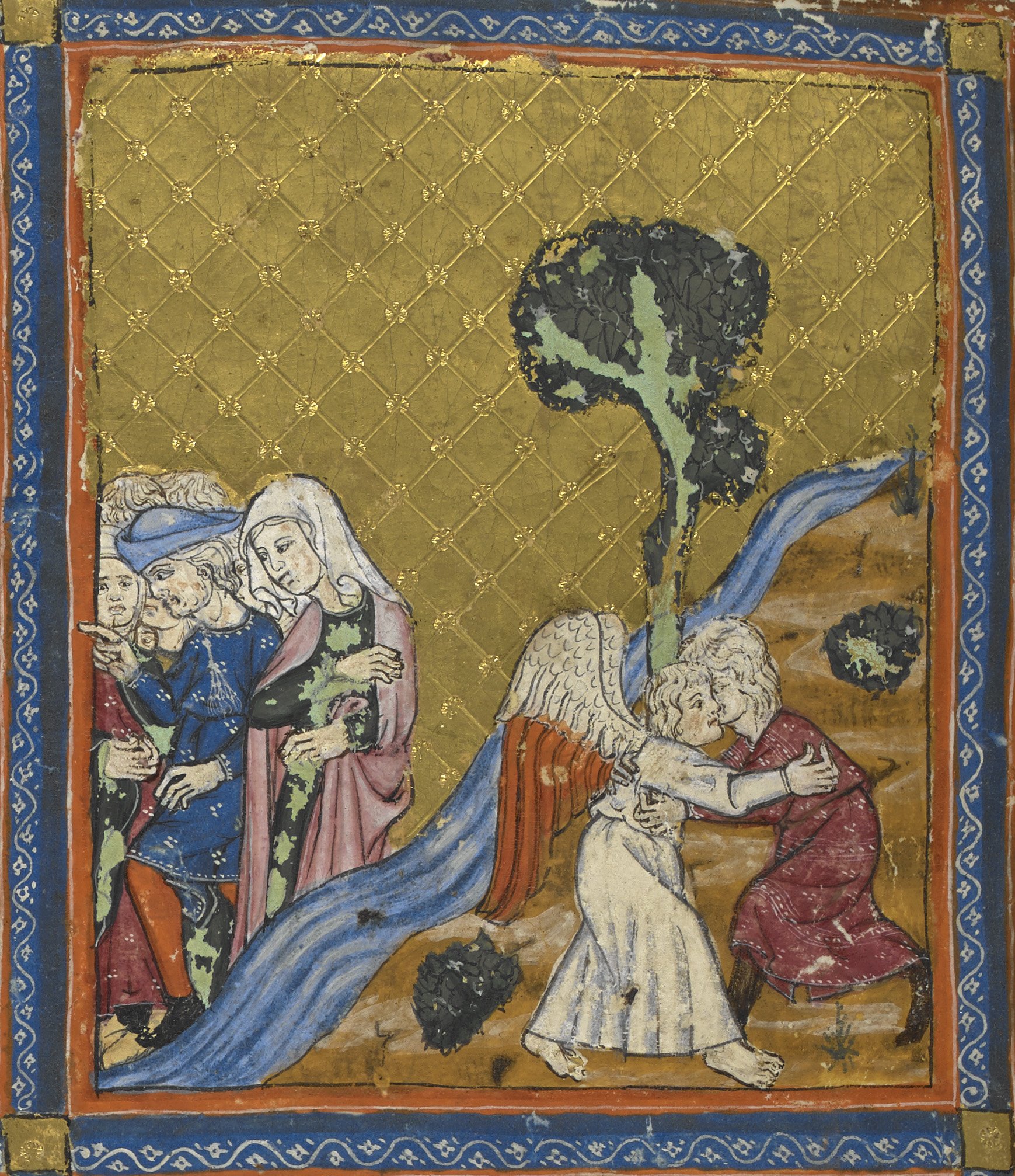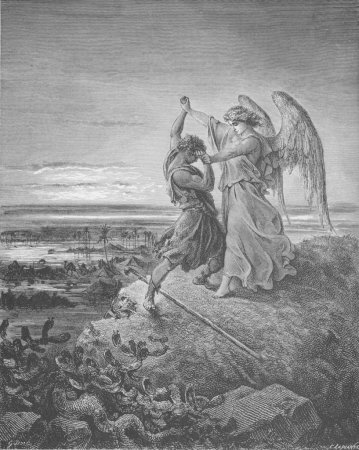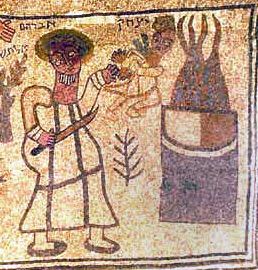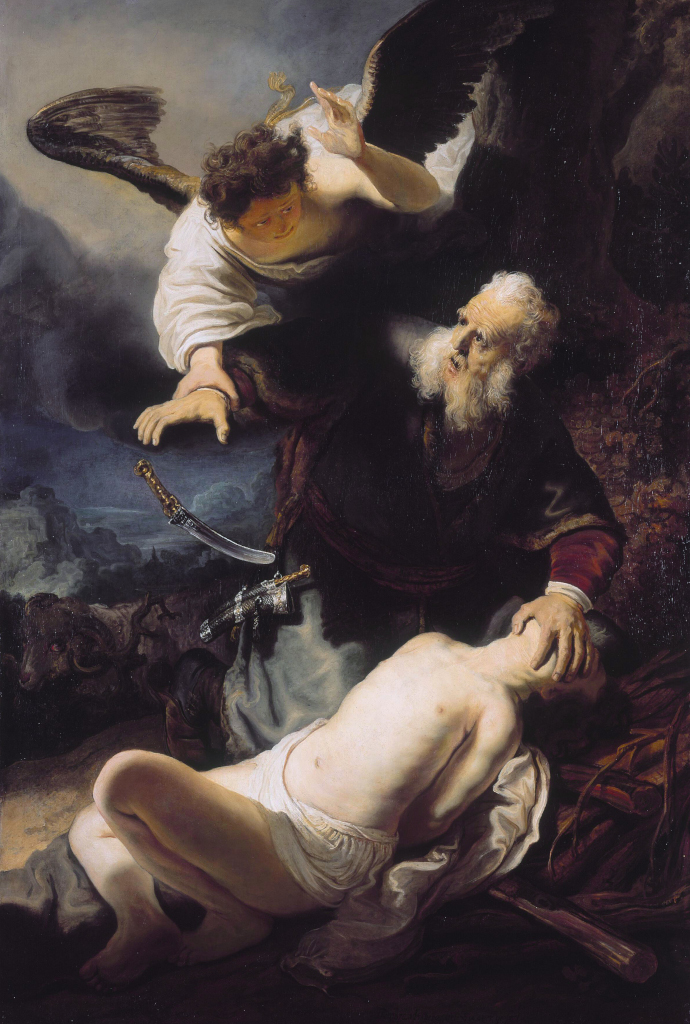Temple Floor Plan by Laya Crust
The first forty chapters of the parashah Teztaveh (“You will command”) are dedicated to the High Priest’s clothing. The text describes combining fibres, fabrics, embedded gemstones, bells and tiny pomegranates.
The haftarah is from the Book of Ezekiel. Ezekiel was among the 8,000 Jews exiled to Babylon in 597 BCE. He writes that he is carried by God to the land of Israel. He is set on top of a very high mountain where he sees something like the structure of a city. A man, seemingly made of brass, gives Ezekiel a thorough tour of the future Temple. There are detailed descriptions of each element to be measured and positioned.
We read measurements and the positioning of each holy object in the future Temple. The illustration above is based on a rendering of Solomon’s Temple from an early 12th C. German manuscript illumination. It shows the Temple’s floor plan. All the sacred objects in the floor plan seem to lie on the floor. I used the manuscript drawing because it is so unusual and delightful. It is a charming way for the viewer to see the Temple artifacts. The manuscript is currently in Vienna, Austria in the National Library.
The haftarah begins with the words, “Thou, son of man, describe the house…”
The Jews were miserable. It was the 25th year of their exile in Babylon. God gave Ezekiel an incredible amount of information about the next Temple to share with the Jews. Hearing about the future Temple in Jerusalem, the Jews were optimistic that they would indeed return to their homes. A provision accompanied the details and plans. The Temple would only be restored if the Jews were repentant and corrected their behaviours and observances.
We will fast-forward almost 2,550 years. Under Jordanian rule, Jews were forbidden to pray at the Western Wall from 1948 until 1967. When Israeli forces liberated Jerusalem in 1967, Jews were once again free to go to the Kotel, the only remaining wall of the Second Temple. We don’t have a Third Temple, but we have a unified Jerusalem, and we can pray at the Kotel.
The Temple Mount is the holiest place of Judaism. The Kotel is the only remaining wall of the Temple’s encompassing structure. This remnant of the Temple is proof of our history, our commitment to God and Judaism, and our right to Jerusalem and Israel. This remnant of the Temple is a place where all Jews can speak to God in their own way.
Today we are fighting for our survival. Every Jew in Israel is fighting for all Jews around the world. Jews outside of Israel are defending Israel, defending democracy, and defending our religion. it is a difficult time, but we will retain our courage, our compassion, and our right to our land.
עם ישראל חי, and BRING OUR HOSTAGES HOME.
May you have a Shabbat Shalom-one of peace, understanding and warmth.
Laya
My illustrations and commentaries of all 82 haftarot can be ordered from www.haftarah-illuminations.ca as a book, a print, or a p[oster.







 Joseph’s Journey by Laya Crust
Joseph’s Journey by Laya Crust Reunited by Laya Crust
Reunited by Laya Crust
 ILLUMINATIONS, An Exploration of Haftarah through Art and History is a book of all the haftarah pictures you have seen in my blog. It boasts 82 full-colour pictures and a rich commentary that accompanies each painting. For more information or to order a book go to
ILLUMINATIONS, An Exploration of Haftarah through Art and History is a book of all the haftarah pictures you have seen in my blog. It boasts 82 full-colour pictures and a rich commentary that accompanies each painting. For more information or to order a book go to 






 The Book of Abraham by Laya Crust (Hand-painted accordion fold book)
The Book of Abraham by Laya Crust (Hand-painted accordion fold book)
 Shabbat Shalom, Laya
Shabbat Shalom, Laya

 Rembrandt, 1636
Rembrandt, 1636 Abraham and Isaac, Rembrandt, 1645
Abraham and Isaac, Rembrandt, 1645
 Desert Sky by Laya Crust
Desert Sky by Laya Crust Acheinu by Laya Crust
Acheinu by Laya Crust